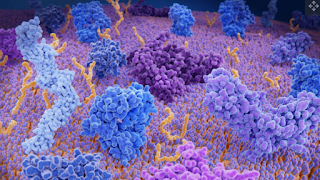We have in LO.5 Biology G10
First: the Concepts
Functions of Proteins in cells
a. Proteins in cells
b. Protein classification
c. Enzyme structure, functions and factors affecting rates.
Second: the References
Cell Biology- Unit 3 - Act.10 Functions of Proteins in Cells(Teacher .SEPUP 330-338 - S.SEPUP 213 215)
Unit 3 - Act 10 - TR 10.1; SS 10.1
Cell Biology- Unit 3 - Act.11 Investigating Enzyme Function (Teacher .SEPUP 339-346 -S.SEPUP 216-218)
Unit 3- Act 11 - TR 11.1
Campbell: chapter 5.4
Third: the Videos links
Fourth: Skills
Correlate (identify the relationship between) structure
and function.
Fifth: the materials as PPT., DOCX., and PDF
In the Drive from this link
Few Notes:
Polypeptides are polymers built from the same set of 20 amino acids
A protein consists of one or more polypeptides
The coils and folds of secondary structure result from hydrogen bonds between repeating constituents of the polypeptide backbone
Typical secondary structures are a coil called an α helix and a folded structure called a β pleated sheet
Tertiary structure is determined by interactions between R groups, rather than interactions between backbone constituents
These interactions between R groups include hydrogen bonds, ionic bonds, hydrophobic interactions, and van der Waals interactions
Strong covalent bonds called disulfide bridges may reinforce the protein’s structure
Quaternary structure results when two or more polypeptide chains form one macromolecule
Collagen is a fibrous protein consisting of three polypeptides coiled like a rope
Hemoglobin is a globular protein consisting of four polypeptides: two alpha and two beta chains
We are glad for you to utilize our site. We furnish you with the assistance of introducing information to you as Egypt's extraordinary understudies in STEM Schools. This assistance is given from the data of master instructors and contemporary extraordinary understudies, and you can likewise help us in that by sharing your data, whatever it is through the WhatsApp and Telegram groups, which will You can discover them on the Home page of the site.💪Good Luck

 Posted by
Posted by 

comment 0 Comments
more_vert